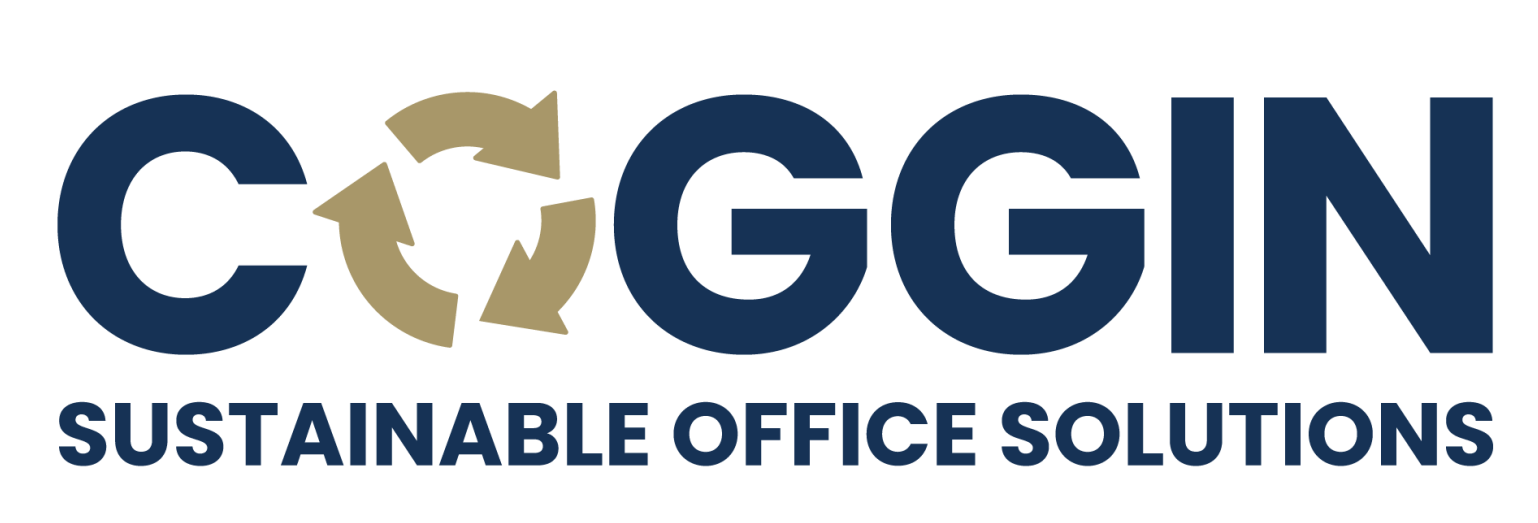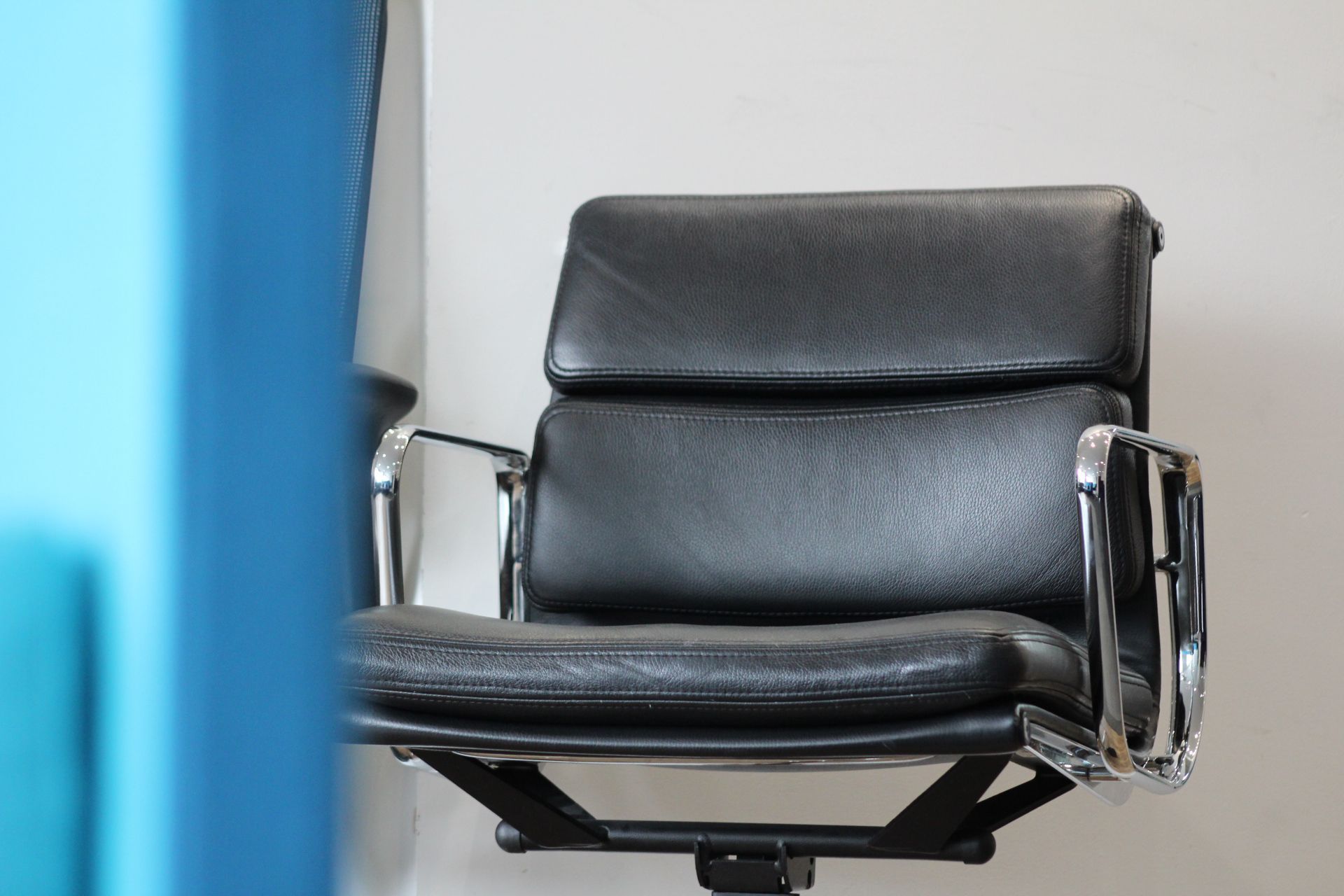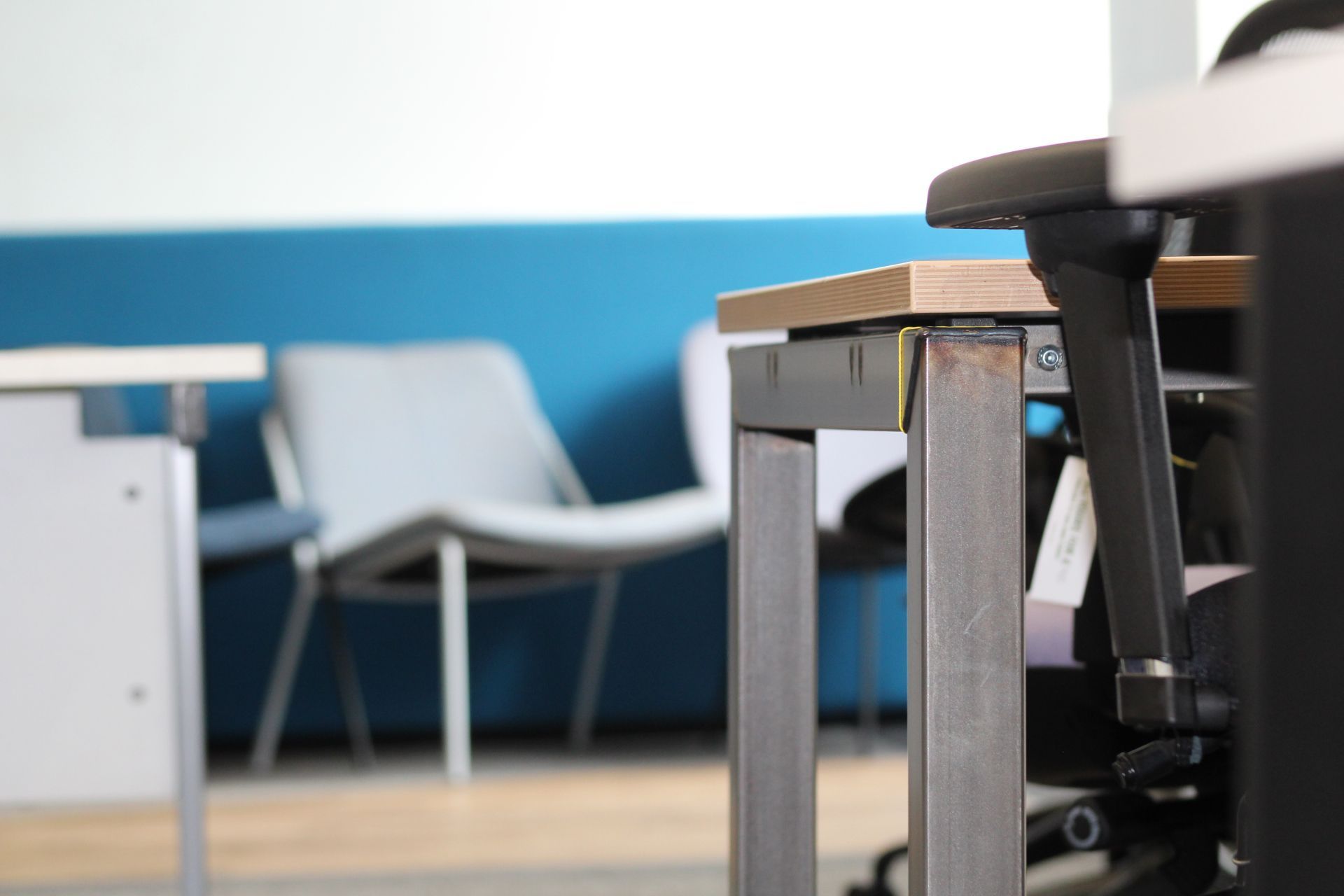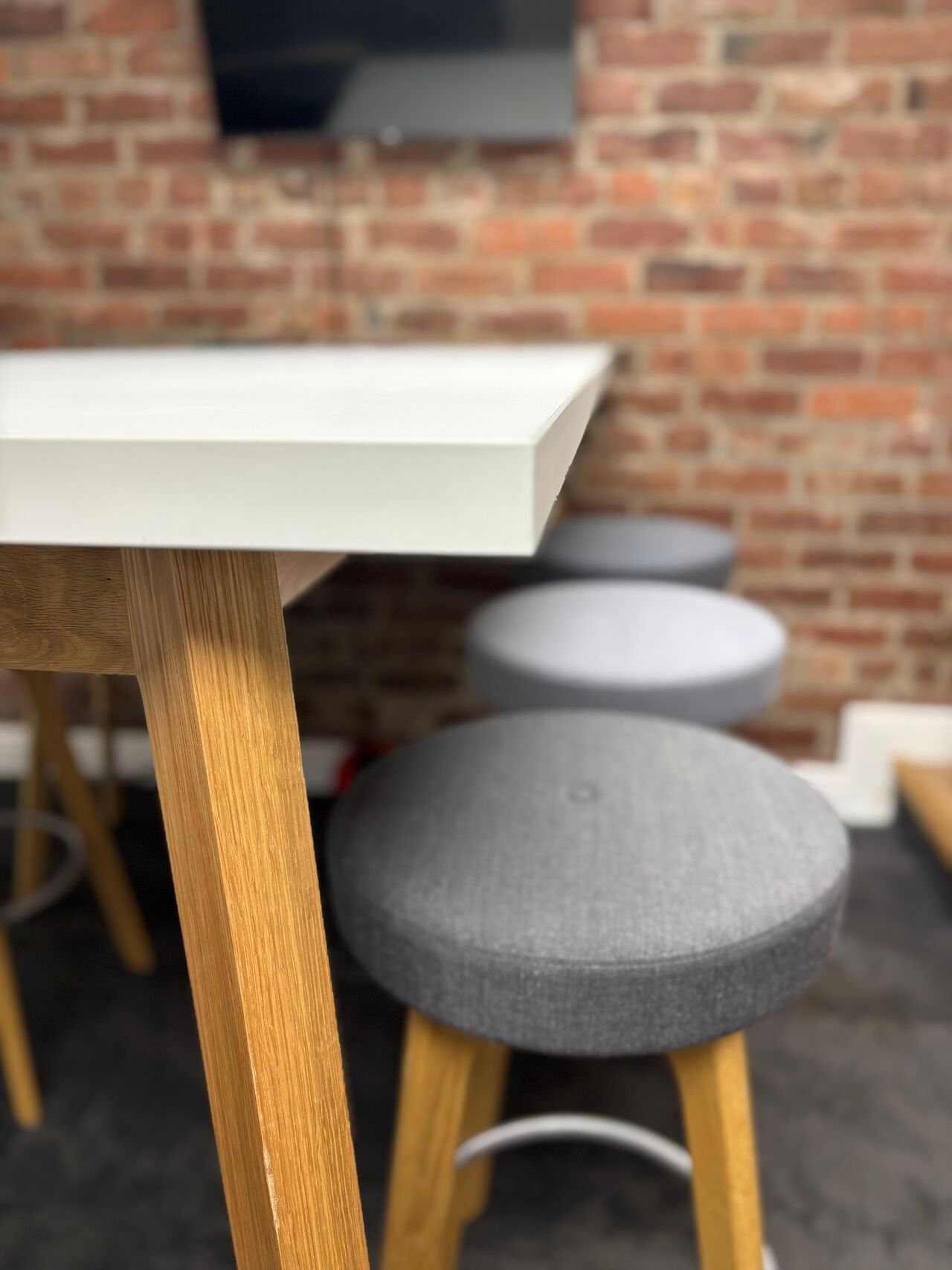40 Ways to Transform Your Office Into an Eco-Friendly Haven
Creating a green, sustainable environment is essential in today’s world, and offices are no exception. With corporations and small businesses contributing significantly to environmental damage, implementing eco-friendly practices in the workplace is crucial. Here are 40 actionable ways to make your office more sustainable, including sustainable office furniture, buying refurbished items, office furniture refurbishment, and zero-landfill office clearance.

Sustainable Office Choices
This section delves into practices focused on acquiring and maintaining sustainable office furniture and equipment, refurbishing existing pieces, and avoiding landfill when clearing out office spaces. It's about creating a working environment that respects the planet by reducing waste and promoting recycling and upcycling.
- Opt for Sustainable Office Furniture: Select furniture made from sustainable, eco-friendly materials, such as bamboo or FSC-certified wood.
- Invest in Refurbished Office Furniture: Purchasing refurbished furniture reduces waste and is often just as functional and aesthetic as new pieces.
- Office Furniture Refurbishment: Refurbishing existing furniture not only saves money but also minimises environmental impact.
- Zero-Landfill Office Clearance: Utilise services that ensure none of your office waste goes to landfill, either by recycling or repurposing.
Learn more about Sustainable Office Choices here by Coggin Sustainable Office Solutions.

Energy Conservation
Explore ways to save energy within the office through the adoption of efficient lighting solutions and utilisation of natural light, thereby reducing carbon footprint and energy bills. This section encompasses strategies to optimise energy usage to create a greener and more cost-effective office environment.
- Use Energy-Efficient Lighting: Swap traditional bulbs for LEDs which use less energy and last longer.
- Install Motion Sensor Lights: They ensure lights are only on when needed, conserving energy.
- Optimise Natural Light: Make the best use of sunlight to reduce dependency on artificial lighting.
Learn more about Energy Conservation here by Constellation.

Waste Reduction
This position emphasises the importance of recycling, implementing a paperless office, and using reusable containers to minimise waste. It explores various practices aimed at reducing the amount of waste generated within the office and encouraging employees to be more mindful of their consumption patterns.
- Implement a Recycling Scheme: Encourage employees to segregate waste properly.
- Use Reusable Containers: Replace disposable cups and plates with reusable alternatives.
- Encourage a Paperless Office: Promote digital documentation to reduce paper waste.
Learn more about Waste Reduction here by WWF.

Green Energy
Learn about the importance of choosing renewable energy suppliers, harnessing solar power, and selecting energy-efficient appliances. This section aims to provide insights into the various options available to offices looking to source their energy from environmentally friendly options.
- Choose Renewable Energy Suppliers: Opt for providers that generate electricity from renewable sources.
- Install Solar Panels: Harness solar energy to power your office, reducing reliance on non-renewable energy.
- Use Energy-Efficient Appliances: Choose appliances with higher energy ratings to consume less power.
Learn more about Green Energy here by TWI Global.

Sustainable Transportation
This position is about promoting eco-friendly commuting options such as carpooling, cycling, and remote work to reduce traffic congestion, carbon emissions, and dependence on fossil fuels. Explore how organisations can support and incentivise more sustainable modes of transportation for their employees.
- Encourage Carpooling: Reduce the number of vehicles on the road by promoting shared rides among employees.
- Support Cycling to Work: Provide facilities like bike racks and showers for employees who cycle to work.
- Promote Remote Work: Let employees work from home, reducing the need for commuting and lowering carbon emissions.
Learn more about Sustainable Transportation here by Office of Energy Efficiency & Renewable Energy.

Greenery and Air Quality
Discover the role of indoor plants and ventilation in improving air quality and employee well-being. This section underlines the significance of creating a healthy, refreshing, and toxin-free work environment through the integration of green elements and proper air circulation.
- Introduce Indoor Plants: They purify air, reduce stress, and enhance productivity.
- Implement a Good Ventilation System: Ensuring fresh air circulation can enhance employee well-being and concentration.
- Use Eco-Friendly Cleaning Products: Choose cleaning supplies that are biodegradable and free from harmful chemicals.
Learn more about Greenery and Air Quality here by Meristem Design.

Water Conservation
Explore the myriad of ways offices can conserve water through efficient appliances, promoting judicious water use, and rainwater harvesting. This section highlights strategies and tips for responsible water consumption and management in the workplace.
- Install Water-Efficient Appliances: Choose fixtures like taps and toilets that use less water.
- Promote Water Conservation: Encourage employees to use water judiciously.
- Collect Rainwater: Harvest rainwater for landscaping needs or for flushing toilets.
Learn more about Water Conservation here by Constellation.

Sustainable Office Supplies
This section focuses on the selection of eco-friendly, sustainable, and recycled office supplies, and the benefits of bulk purchasing. It provides insights into how choosing green office supplies can contribute to environmental conservation and sustainability.
- Choose Recycled Paper: Opt for paper products made from recycled materials.
- Use Eco-Friendly Office Supplies: Choose supplies that are biodegradable or made from sustainable materials.
- Buy in Bulk: Purchase office supplies in bulk to reduce packaging waste.
Learn more about Sustainable office Supplies here by State Of Matter.

Sustainable Packaging
Discover how adopting biodegradable packaging and recycling schemes can minimise waste and environmental impact. This section offers insights into the importance of responsible packaging choices and how they contribute to overall sustainability efforts.
- Use Biodegradable Packaging: Opt for packaging materials that can decompose naturally.
- Implement a Packaging Recycling Scheme: Encourage employees to recycle packaging materials properly.
- Choose Suppliers with Green Packaging: Opt for vendors who use minimal and sustainable packaging.
Lean more about Sustainable Packaging here by TIPA Compostable Packaging.

Employee Engagement and Awareness
Understand the role of employee education, initiatives, and rewards in fostering an eco-friendly office culture. This section illustrates how engaging employees in sustainability practices and rewarding eco-friendly behaviour can drive positive change within the organisation.
- Conduct Sustainability Workshops: Educate employees on the importance of eco-friendly practices.
- Encourage Employee Initiatives: Support employee-led sustainability projects and ideas.
- Reward Eco-Friendly Practices: Recognise and reward employees who contribute to making the office more sustainable.
Learn more about Employee Engagement and Awareness here by Cultivating Capital.

Technology and Electronics
Explore the benefits of energy-efficient office equipment, proper e-waste disposal, and energy conservation practices. This section elucidates how adopting green tech solutions can help offices lower their energy consumption and minimise their environmental impact.
- Use Energy-Efficient Equipment: Choose computers, printers, and other devices with high energy-efficiency ratings.
- Implement E-Waste Recycling: Properly dispose of or recycle electronic waste.
- Encourage Energy Conservation: Promote practices like turning off unused devices and using power-saving modes.
Learn more about Technology and Electronic here by Rubicon.

Sustainable Catering
This section provides insights into how choosing catering services that use local and organic produce, reducing single-use plastics, and implementing composting can contribute to a more sustainable office environment. Learn how sustainable catering choices can have a positive impact on health and the environment.
- Opt for Local and Organic Produce: Choose catering services that use locally sourced and organic ingredients.
- Reduce Single-Use Plastics: Use reusable cutlery, plates, and cups instead of disposable ones.
- Implement Composting: Compost organic waste to reduce landfill waste and create nutrient-rich soil.
Learn more about Sustainable Catering here by Fooditude.

Green Building Practices
Learn about the importance of adopting green building standards, installing green roofs, and choosing sustainable flooring options. This section aims to educate on how sustainable construction and design choices can lead to more energy-efficient and environmentally friendly office spaces.
- Implement Green Building Standards: Opt for eco-friendly building materials and construction practices.
- Install Green Roofs: They can reduce energy use, manage stormwater, and improve air quality.
- Opt for Sustainable Flooring: Choose flooring made from sustainable, renewable materials like bamboo or cork.
Learn more about Green Building Practices here by Refine Global Recruitment.
Conclusion
Making your office eco-friendly is not only beneficial for the environment but can also boost employee morale and reduce operational costs. By incorporating sustainable practices like using eco-friendly furniture, conserving energy and water, and promoting waste reduction, you can make a significant contribution to preserving our planet for future generations. Every step, no matter how small, counts towards creating a greener, more sustainable future.




